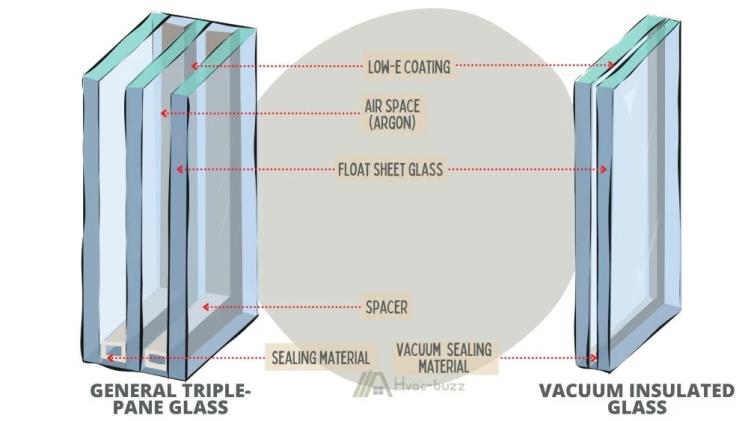The Difference Between Vacuum Glazing Vs Double Glazing

The debate between vacuum glazing and double glazing is a very heated one. However, there are many things to consider when making a decision. First, the two types of glass are not equal. They have different strengths, weaknesses, and price points. So, it is important to find the right choice for you.
HaanGlas Hybrid
HaanGlas VIG is a new generation of insulating glass. It is made from environmentally friendly materials. The vacuum seal keeps heat inside the building and minimizes convection and conductive heat flow. Unlike conventional double glazing, HaanGlas is made with a vacuum seal between the two panes. This helps keep the room warmer and reduces heating bills. In addition, it has a thermal insulation coefficient of 0.5W/m2.K.
HaanGlas is guaranteed for 15 years. It comes in a variety of shapes, styles and finishes. With its patented technology, HaanGlas provides about 10 dB reduction in noise. HaanGlas is made from lead-free, environmentally-friendly materials. There are no visible plugs on the face of the glass, so you can install it into your existing window frames without worrying about any safety issues
FINEO VS HaanGlas
There are many reasons to choose vacuum insulating glass over conventional double pane. It helps to lower energy costs, improve the comfort of your home, and minimize your carbon footprint. In addition, it can also reduce your upper respiratory infections.
Several manufacturers offer vacuum insulated glass, but the clear winner is HaanGLAS. This vacuum glazing VS double glazing features a number of cool new technology, including a toughened safety glass, exclusive low temperature sealing technology, and a high performance Low-E coating. The U-value of this vacuum glass is well above the U-value of solid brick walls.
Besides its laudable thermal insulation capabilities, this type of glass also offers remarkable sound insulation. It is designed to effectively block medium and low frequency penetrating noises. With a weighted sound reduction index of more than 39 dB, this vacuum insulated glass is the best in its class.
Energy Efficiency
One of the major challenges in building energy efficient homes is reducing the space-heating loss through the windows. The latest technology aims to combat this issue. One solution is to install difference between VIG and IGU, which can prevent condensation and keep the glass surface warm. This is ideal for cold weather applications. It has an excellent thermal performance and longer life than other glass.
Compared to traditional double glazing, which uses inert gas to separate the panes, vacuum insulated glass does not use such materials. In addition, it is a much thinner system. It is a third of the weight of triple glazing. Another benefit of vacuum insulated glass is that it has better insulation properties. This means the window can stay cool during the summer and maintain an ideal temperature in winter.
Durability
Vacuum insulated glazing has been proven to provide better thermal performance than double-glazing. This glazing has a low profile and is less heavy. It can be installed with all existing insulating technologies. In addition to its superior performance, vacuum insulating glass is ideal for retrofitting old buildings. Since vacuum insulated glass contains no air between the panes of glass, it can be used in all climates.
Compared to conventional double-glazing, vacuum insulated glazing has been shown to have better durability in thermal performance over a longer service life. The thickness of the glass panes is also much smaller. These factors contribute to its thin profile and lightweight nature. Another important consideration is the amount of visible light that passes through the glass. A low value means the amount of heat gained by direct sunlight is minimized.
Cost
Vacuum glazing is a window that is a combination of two tempered flat glass panes. Each pane is separated with a micro-supporter to create a vacuum. In theory, the vacuum creates a layer of air that acts as an insulated barrier. The U-value of a vacuum-insulated window is measured in Watts per square metre per Kelvin. The lower the U-value, the better the thermal performance. It is possible to have U-values as low as 0.48W/m2K.
However, the best U-value is 0.6W/m2K. To achieve this, the gap between the two panes must be filled with inert gas. This gap helps slow down the rate at which heat moves from the inner pane to the outer. It also helps improve the thermal efficiency of the window.
Final Thought
So, Vacuum glazing and double glazing are two popular types of insulating glass. They both offer benefits, but there are some important differences. With vacuum glazing, the space between the panes of glass is filled with inert gas. This reduces the transfer of heat.




